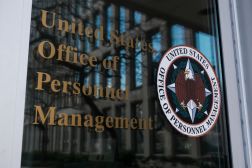Advisory committee to IRS: Step up on digital services
A committee of private sector tax experts released a report last week that calls on the IRS to devote more time and effort to improving its digital services.
The nine-person Electronic Tax Administration Advisory Committee made 15 recommendations in its yearly report to Congress, calling on the IRS to meet the growing demand for digital interaction. The committee recommended the agency focus more on partnerships and strategies that will decrease taxpayer burden, increase tax compliance and lead to long-term cost savings.
“The IRS faces mounting challenges as it tackles reduced resources and staffing, as well as increased demand for its services,” the report reads. “The nature of this demand is also changing, as taxpayers increasingly prefer digital self-service to phone and paper methods. While the IRS is making progress to plan for the development of digital tools, the IRS needs to accelerate its strategy to overcome service shortfalls.”
A number of the recommendations the committee made are aimed at performance metrics that will give the agency and Congress a better handle on where the agency should concentrate on its digital strategy. The agency has recently put its Service on Demand strategy into place, which includes 71 digital projects aimed at giving taxpayers a single, secure online account where they can view tax information, make payments and communicate with the agency. The committee wants this plan to be enacted over five years, but the IRS has not committed to any sort of time frame.
Another suggestion was vastly improving IRS.gov, overhauling the site to serve more as an information resource than just a repository for various tax forms. The committee wants to see search capabilities and navigation revamped for a site that has more than 100,000 pages and attracted more than 443 million visits in 2014.
“By improving search and navigation functionality, as well as content, the IRS will maximize IRS.gov as part of its efforts to drive a digital-first taxpayer service model,” the report reads. “Further, there is an opportunity on IRS.gov to make taxes clearer, to make online self-service an even more viable alternative to traditional service channels, and to satisfy more taxpayers.”
The report did give the agency credit for reaching benchmarks related to electronic tax filing, noting that the IRS almost reached a 90 percent e-file rate for individual returns in 2015. It also found that two major business return types — partnership (Form 1065) and fiduciary (Form 1041) — eclipsed an 80 percent e-file for the first time. The committee holds the IRS to a goal of electronically receiving 80 percent of returns.
The call to move quickly toward digital services could save the IRS a large chunk of money. According to the report, in fiscal year 2014, phone calls for assistance cost the IRS $42.33 per call, while digital transactions cost the agency 22 cents per transaction.
An improvement in digital services could also greatly enhance security measures. The report gave credit to IRS Commissioner John Koskinen for holding a meeting with state tax agencies and private software companies in March to discuss ways to improve authentication and e-signature requirements when people file their taxes online. The report does not take into account the data breach announced in May, which resulted in 100,000 taxpayers having their information compromised through the agency’s Get Transcript service.
Read the full committee report below.






